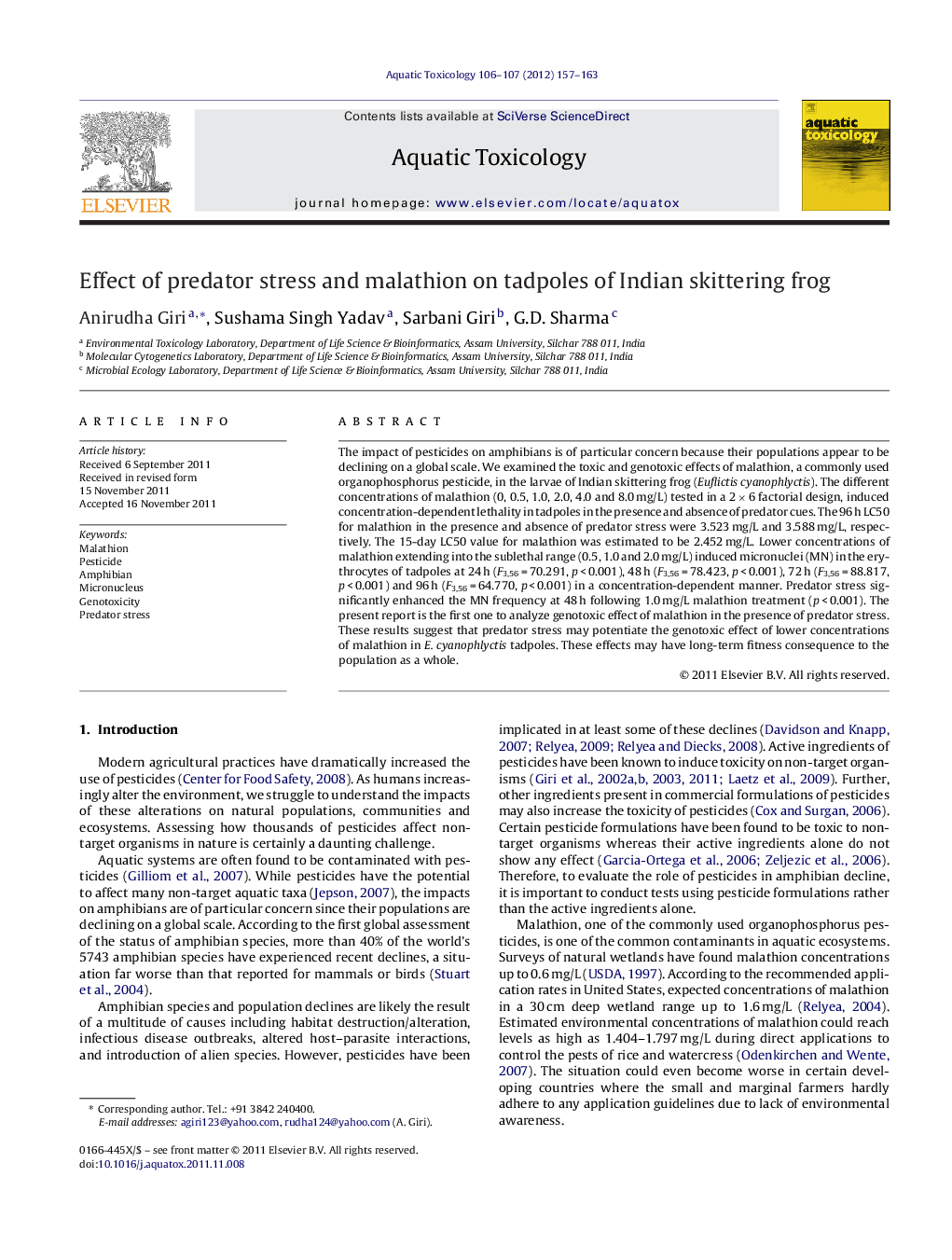| Article ID | Journal | Published Year | Pages | File Type |
|---|---|---|---|---|
| 4529797 | Aquatic Toxicology | 2012 | 7 Pages |
The impact of pesticides on amphibians is of particular concern because their populations appear to be declining on a global scale. We examined the toxic and genotoxic effects of malathion, a commonly used organophosphorus pesticide, in the larvae of Indian skittering frog (Euflictis cyanophlyctis). The different concentrations of malathion (0, 0.5, 1.0, 2.0, 4.0 and 8.0 mg/L) tested in a 2 × 6 factorial design, induced concentration-dependent lethality in tadpoles in the presence and absence of predator cues. The 96 h LC50 for malathion in the presence and absence of predator stress were 3.523 mg/L and 3.588 mg/L, respectively. The 15-day LC50 value for malathion was estimated to be 2.452 mg/L. Lower concentrations of malathion extending into the sublethal range (0.5, 1.0 and 2.0 mg/L) induced micronuclei (MN) in the erythrocytes of tadpoles at 24 h (F3,56 = 70.291, p < 0.001), 48 h (F3,56 = 78.423, p < 0.001), 72 h (F3,56 = 88.817, p < 0.001) and 96 h (F3,56 = 64.770, p < 0.001) in a concentration-dependent manner. Predator stress significantly enhanced the MN frequency at 48 h following 1.0 mg/L malathion treatment (p < 0.001). The present report is the first one to analyze genotoxic effect of malathion in the presence of predator stress. These results suggest that predator stress may potentiate the genotoxic effect of lower concentrations of malathion in E. cyanophlyctis tadpoles. These effects may have long-term fitness consequence to the population as a whole.
► We examined the effects of malathion on Indian skittering frog tadpoles. ► Malathion induced dose dependent increase in micronucleus incidence. ► Malathion also induced dose dependent lethal effects. ► Addition of predator cue increased malathion genotoxicity, but not lethality.
